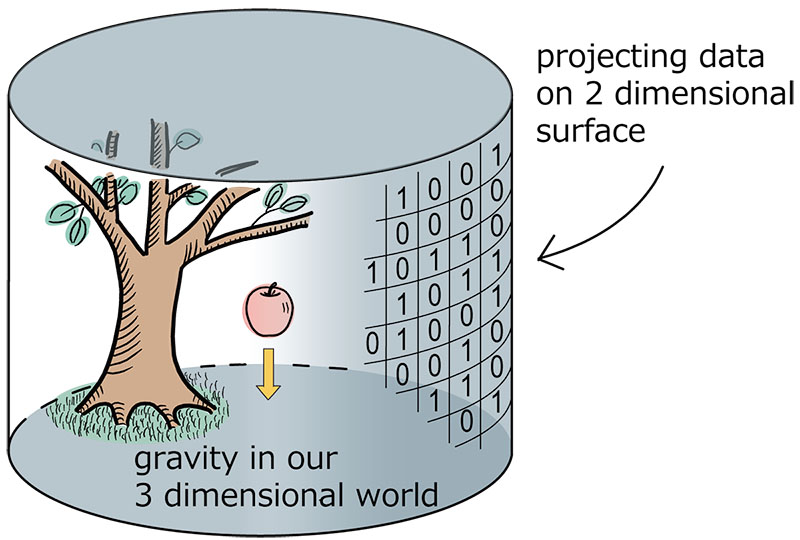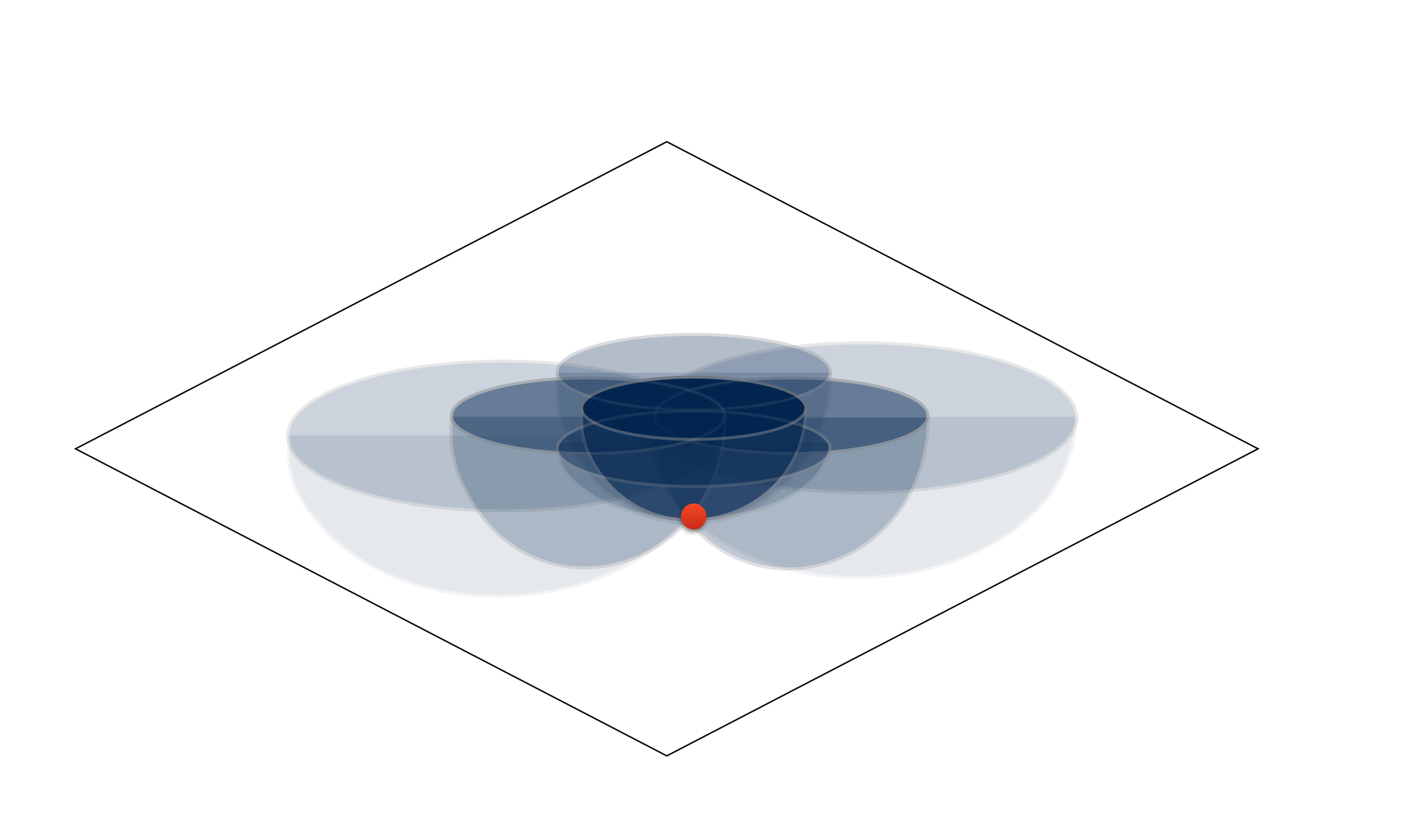May 27, 2015
Kavli Institute for the Physics and Mathematics of the Universe (Kavli IPMU)
 (credit: Hirosi Ooguri)
(credit: Hirosi Ooguri)
A collaboration of physicists and a mathematician has made a significant step toward unifying general relativity and quantum mechanics by explaining how spacetime emerges from quantum entanglement in a more fundamental theory. The paper announcing the discovery by Hirosi Ooguri, a Principal Investigator at the University of Tokyo’s Kavli IPMU, with Caltech mathematician Matilde Marcolli and graduate students Jennifer Lin and Bogdan Stoica, will be published in Physical Review Letters as an Editors’ Suggestion “for the potential interest in the results presented and on the success of the paper in communicating its message, in particular to readers from other fields.”*
Physicists and mathematicians have long sought a Theory of Everything (ToE) that unifies general relativity and quantum mechanics. General relativity explains gravity and large-scale phenomena such as the dynamics of stars and galaxies in the universe, while quantum mechanics explains microscopic phenomena from the subatomic to molecular scales.
The holographic principle is widely regarded as an essential feature of a successful Theory of Everything. The holographic principle states that gravity in a three-dimensional volume can be described by quantum mechanics on a two-dimensional surface surrounding the volume. In particular, the three dimensions of the volume should emerge from the two dimensions of the surface. However, understanding the precise mechanics for the emergence of the volume from the surface has been elusive.
Now, Ooguri and his collaborators have found that quantum entanglement is the key to solving this question. Using a quantum theory (that does not include gravity), they showed how to compute energy density, which is a source of gravitational interactions in three dimensions, using quantum entanglement data on the surface. This is analogous to diagnosing conditions inside of your body by looking at X-ray images on two-dimensional sheets. This allowed them to interpret universal properties of quantum entanglement as conditions on the energy density that should be satisfied by any consistent quantum theory of gravity, without actually explicitly including gravity in the theory. The importance of quantum entanglement has been suggested before, but its precise role in emergence of spacetime was not clear until the new paper by Ooguri and collaborators.
Quantum entanglement is a phenomenon whereby quantum states such as spin or polarization of particles at different locations cannot be described independently. Measuring (and hence acting on) one particle must also act on the other, something that Einstein called “spooky action at distance.” The work of Ooguri and collaborators shows that this quantum entanglement generates the extra dimensions of the gravitational theory.
 Prof. Hirosi OoguriComment from paper author Hirosi Ooguri:
Prof. Hirosi OoguriComment from paper author Hirosi Ooguri:
"It was known that quantum entanglement is related to deep issues in the unification of general relativity and quantum mechanics, such as the black hole information paradox and the firewall paradox. Our paper sheds new light on the relation between quantum entanglement and the microscopic structure of spacetime by explicit calculations. The interface between quantum gravity and information science is becoming increasingly important for both fields. I myself am collaborating with information scientists to pursue this line of research further."
* UPDATE: This paper was published on June 2, 2015
Figures
All figures are found at http://web.ipmu.jp/press/20150527-PRJentanglement
 Holographic Mapping Discovered by Ooguri and Collaborators: The mathematical formula derived by Ooguri and his collaborators relates local data in the extra dimensions of the gravitational theory, depicted by the red point, are expressed in terms of quantum entanglements, depicted by the blue domes. (credit: Jennifer Lin et al.)
Holographic Mapping Discovered by Ooguri and Collaborators: The mathematical formula derived by Ooguri and his collaborators relates local data in the extra dimensions of the gravitational theory, depicted by the red point, are expressed in terms of quantum entanglements, depicted by the blue domes. (credit: Jennifer Lin et al.)
Publication
- Authors: Jennifer Lin1, Matilde Marcolli2, Hirosi Ooguri3,4, Bogdan Stoica3
Author affiliations: 1 Enrico Fermi Institute and Department of Physics, University of Chicago
2 Department of Mathematics, California Institute of Technology
3 Walter Burke Institute for Theoretical Physics, California Institute of Technology
4 Kavli Institute for the Physics and Mathematics of the Universe (WPI), University of Tokyo - Title: Locality of Gravitational Systems from Entanglement of Conformal Field Theories
- Journal: Physical Review Letters, 114, 221601 (2015)
- DOI: 10.1103/PhysRevLett.114.221601
- Link to journal abstract: http://journals.aps.org/prl/abstract/10.1103/PhysRevLett.114.221601
- Preprint (Webpage of the arXiv.org)
Contacts
Reserch Contact
Hirosi Ooguri
Kavli Institute for the Physics and Mathematics of the Universe, The University of Tokyo
E-mail: h.ooguri_at_gmail.com
PIO Contact
Motoko Kakubayashi, Kavli Institute for the Physics and Mathematics of the Universe, The University of Tokyo
+81-4-7136-5980 (office) , press_at_ipmu.jp
Aya Tsuboi, Kavli Institute for the Physics and Mathematics of the Universe, The University of Tokyo
+81-4-7136-5981 (office)
ABOUT KAVLI IPMU
Kavli IPMU (Kavli Institute for the Physics and Mathematics of the Universe) is an international research institute with English as its official language. The goal of the institute is to discover the fundamental laws of nature and to understand the Universe from the synergistic perspectives of mathematics, astronomy, and theoretical and experimental physics. The Institute for the Physics and Mathematics of the Universe (IPMU) was established in October 2007 under the World Premier International Research Center Initiative (WPI) of the Ministry of Education, Sports, Science and Technology in Japan with the University of Tokyo as the host institution. IPMU was designated as the first research institute within the University of Tokyo Institutes for Advanced Study (UTIAS) in January 2011. It received an endowment from The Kavli Foundation and was renamed the “Kavli Institute for the Physics and Mathematics of the Universe” in April 2012. Kavli IPMU is located on the Kashiwa campus of the University of Tokyo, and more than half of its full-time scientific members come from outside Japan.
Kavli IPMU Website - http://www.ipmu.jp/






